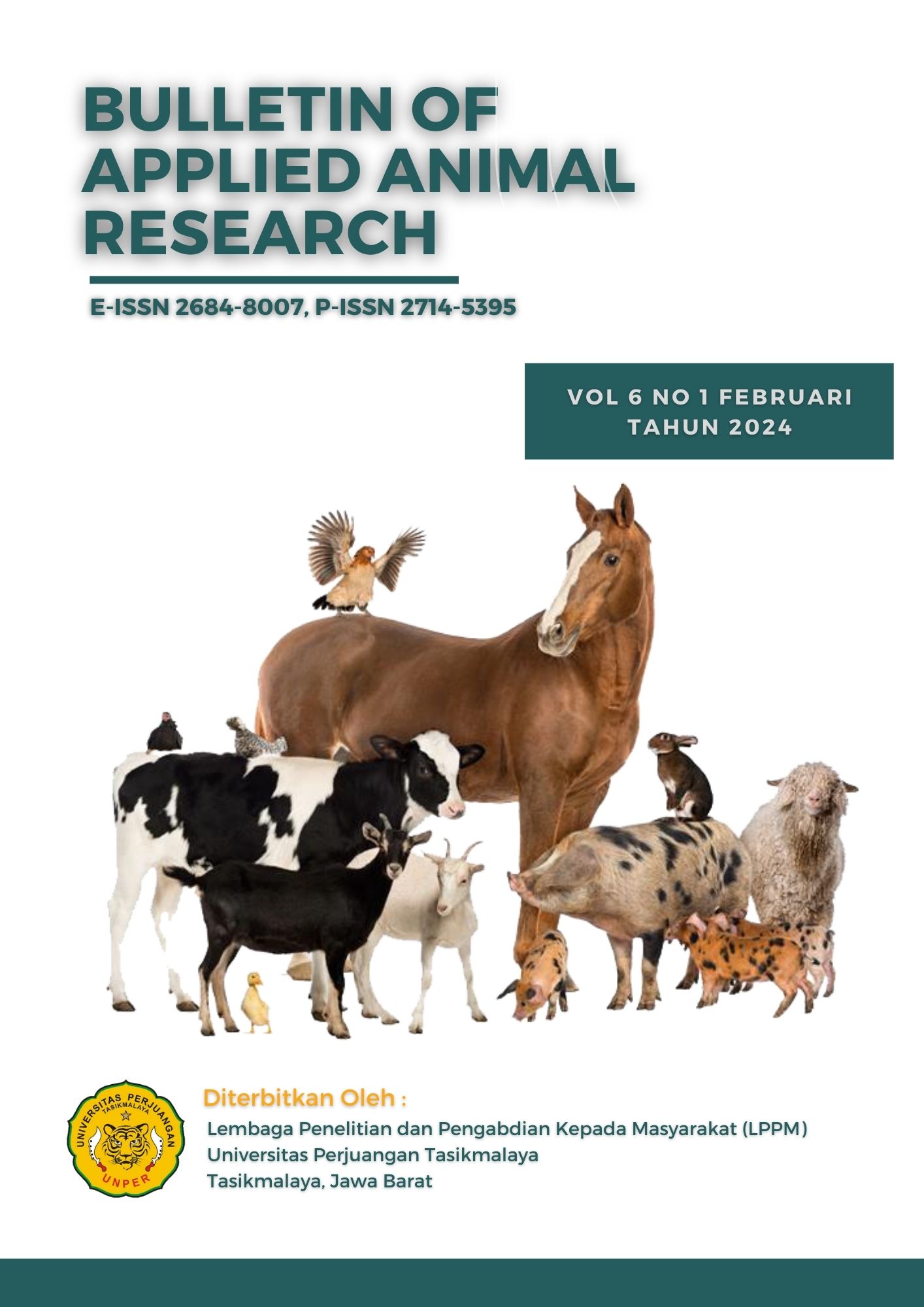Saflower oil (Chartamus tinctorius L.) and inositol supplementation on cooking losses and Water Holding Capacity of male sentul chicken
DOI:
https://doi.org/10.36423/baar.v6i1.1289Abstract
This study aimed to determine the effect of safflower oil (Chartamus tinctorius L) and Inositol supplementation in diet on Water Holding Capacity and cooking losses of male sentul chicken. The experimental design was a completely randomized design consisting of 9 treatments and 3 replicates. Every treatment used 3 male sentul chickens. It consisted of nine ratios, 100% basal feed (BF) (R0), BF + safflower oil (SO) 0,5% (R1), BF + SO 1% (R2), BF + inositol 0,5% (R3), BF + inositol 1% (R4), BF + SO 0,5%+ Inositol 0,5% (R5), BF + SO 0,5% + inositol 1% (R6), BF + SO 1% + Inositol 0,5% (R7), BF + SO 1% + Inositol 1% (R8). The results showed that there was no significantly effect (P>0,05) on cooking losses and Water Holding Capacity. The average of breast meat Water Holding Capacity were R0 = 56,24 ± 2,16 and R1-R8 = 54,38 ± 2,05, while on the thigh were R0 = 57,74 ± 1,08 and R1-R8= 55,82 ± 1,85. The means of breast meat cooking losses were R0 = 28,13 ± 1,01 and R1-R8 = 29,41 ± 1,70, while on the thigh were R0 = 32,60 ± 1,25 and R1-R8 = 33,84 ± 1,94. It concluded that Water Holding Capacity and cooking losses of male sentul chicken meat supplemented safflower oil and Inositol were relative same as control, however the Water Holding Capacity considered lower dan the cooking losses higher.
References
Arni, Hafid, H., & Aka, R. 2016. Pengaruh Pemberian Pasta Jahe (Zingiber Officinale Rosceae) Terhadap Kualitas Daging Ayam Kampung. Jitro, 3(3), 104–108.
Batara, V., Tasse, A. M., & Napirah, A. 2015. Efek Pemberian Minyak Kelapa Sawit Terproteksi dalam Ransum Terhadap Kadar Glukosa dalam Darah Ayam Kampung Super. Jitro, 4(1), 1–6.
Darwati, S., Afnan, R., Prabowo, S., & Nurcahya, H. 2018. Carcass and Meat Quality Pelung Sentul Kampung Broiler Crossbreed Chicken. IOP Conf. Ser.: Earth Environ. Sci, 102, 12026.
de Sousa Reis, V. C., Ferreira, I. M., Durval, M. C., Antunes, R. C., & Backes, A. R. 2023. Measuring Water Holding Capacity in pork meat images using deep learning. Meat Science, 200, 109159.
Downloads
Published
How to Cite
Issue
Section
License
Copyright (c) 2024 Mujibur Rahman, Ning Iriyanti, Raden Singgih Sugeng Santosa

This work is licensed under a Creative Commons Attribution-ShareAlike 4.0 International License.












